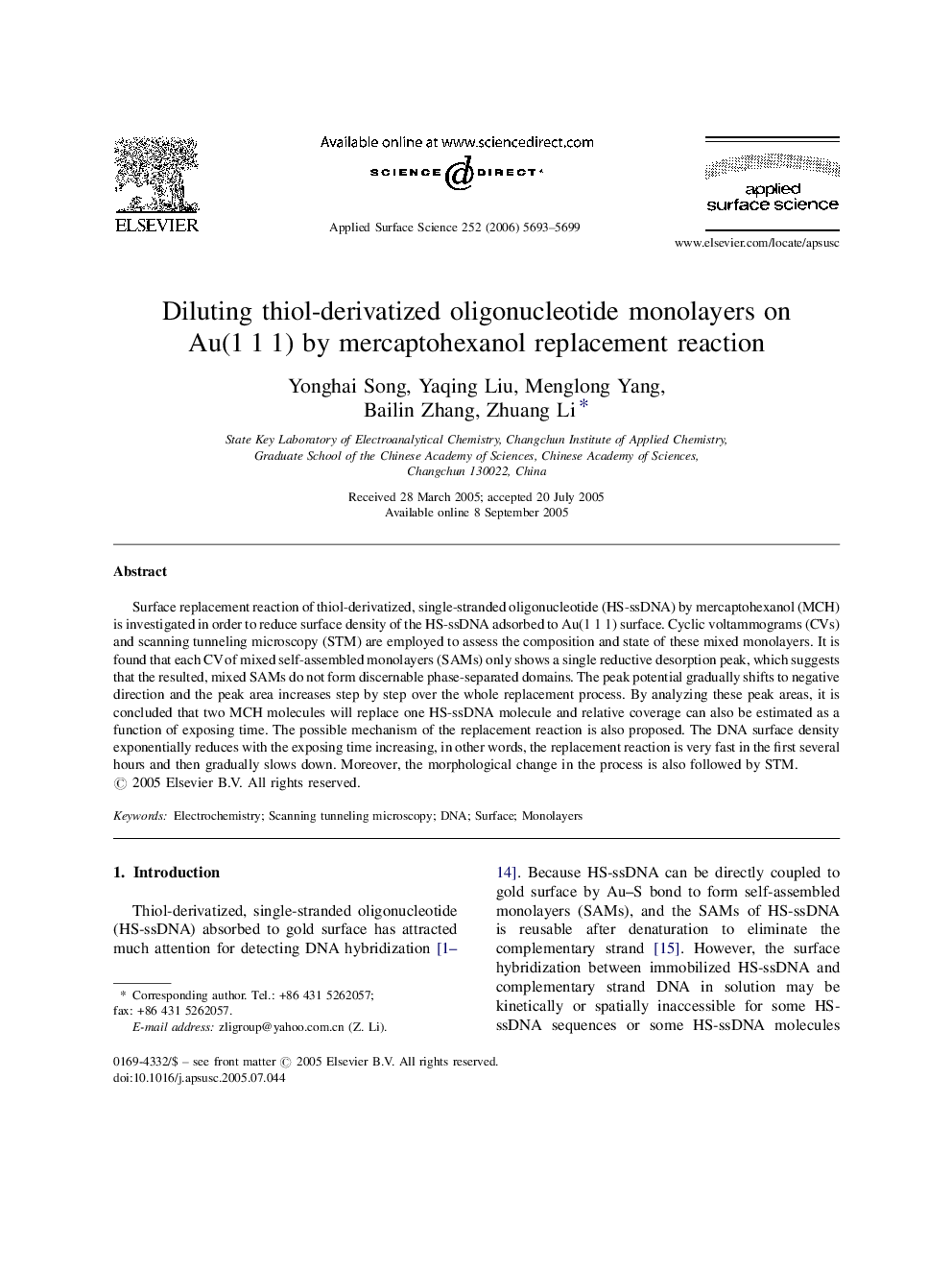| کد مقاله | کد نشریه | سال انتشار | مقاله انگلیسی | نسخه تمام متن |
|---|---|---|---|---|
| 5370372 | 1388488 | 2006 | 7 صفحه PDF | دانلود رایگان |

Surface replacement reaction of thiol-derivatized, single-stranded oligonucleotide (HS-ssDNA) by mercaptohexanol (MCH) is investigated in order to reduce surface density of the HS-ssDNA adsorbed to Au(1Â 1Â 1) surface. Cyclic voltammograms (CVs) and scanning tunneling microscopy (STM) are employed to assess the composition and state of these mixed monolayers. It is found that each CV of mixed self-assembled monolayers (SAMs) only shows a single reductive desorption peak, which suggests that the resulted, mixed SAMs do not form discernable phase-separated domains. The peak potential gradually shifts to negative direction and the peak area increases step by step over the whole replacement process. By analyzing these peak areas, it is concluded that two MCH molecules will replace one HS-ssDNA molecule and relative coverage can also be estimated as a function of exposing time. The possible mechanism of the replacement reaction is also proposed. The DNA surface density exponentially reduces with the exposing time increasing, in other words, the replacement reaction is very fast in the first several hours and then gradually slows down. Moreover, the morphological change in the process is also followed by STM.
Journal: Applied Surface Science - Volume 252, Issue 16, 15 June 2006, Pages 5693-5699